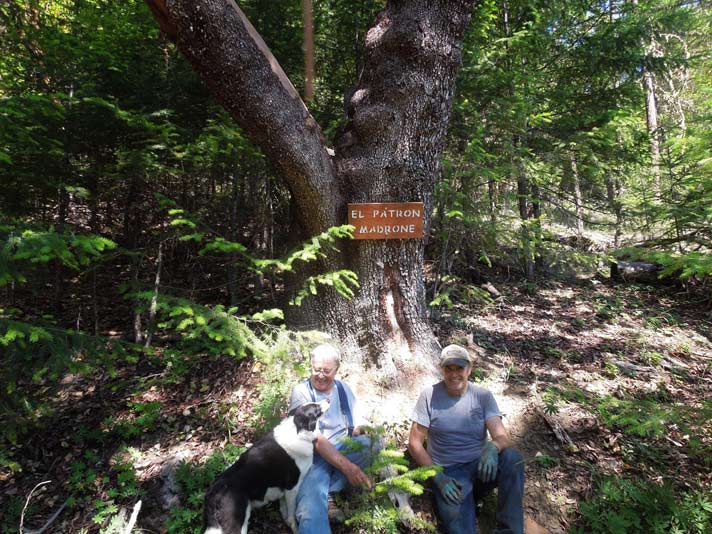Trail Talk – July 2016
Forest Park is unlike most city parks in that there aren’t amenities like flush toilets and playgrounds. As the name implies, it is a park in the forest, and is designed to be a place where folks can enjoy a walk (or run or bike) in the woods. Trails have been built to allow people access to many features in the park. It is a work in progress: all planned trails have not yet been finished, though most will be ready by Fall 2017.
Of course, even when trails are finished, maintenance must take place. Poison oak and weeds are cut back to allow safe passage, downed limbs and trees are removed; dangerous trail tread areas are rebuilt. Locations for benches and overlooks are scouted, with that infrastructure added as needed. It’s a daunting task, but as the volunteers would tell you, a labor of love. Why join a gym when there’s fresh air and exercise out of doors?
With that in mind, I’d like to introduce you to a couple of our newest trails: Owl Hoot and Madrone Grove. Owl Hoot runs from Twin Peaks Trail on the west to Boulder Trail on the east and follows an old miners’ ditch for much of its length. It travels through recently-logged forest before rounding the ridge and heading down a series of gentle switchbacks to connect into Boulder Trail.
An enjoyable 3 mile loop can be made by parking at P3, hiking up Canyon Falls Trail and Shade Creek Trail along Norling Gulch, heading left up Twin Peaks Trail a bit, and joining Owl Hoot Trail. Here, the grade is level for 0.5 mi. bringing you to the junction with Madrone Grove Loop Trail, which I’ll get to in a bit. Continuing on, you’ll enter Mountain Mahogany Meadows, where a great view of Jacksonville and the upper Bear Creek Valley awaits. A bit further, and you start down through mixed hard and softwood forest to Boulder Trail, where a left turn takes you back to your car. A longer loop of 4 miles can be made by following the pink diamond loop from P2.
Madrone Grove Loop Trail is found near Mountain Mahogany Meadows. Because it is somewhat steep and narrow, it is closed to bicycle traffic. It departs and returns to Owl Hoot Trail allowing an extension of the hikes mentioned above. It derives its name from a collection of huge old-growth madrones found at its upper reaches. These massive trees have survived fires and logging, and their massive trunks and canopies dominate the forest. Each is strangely unique, twisted and gnarled, every crook and cranny telling a story of life in the forest. Bear and cougar claws mark many of the trunks—evidence of their value as wildlife trees. Benches will be added along the loop to allow contemplation of these majestic beauties.
So, take a hike. Pack water—even in the shade, summer temperatures can be daunting. And as always, thank-you for packing out what you pack in.

 Trail Talk is a monthly column by Clayton Gillette about hiking the Jacksonville Woodlands trail system. For more information, please visit the Jacksonville Woodlands Association website at
Trail Talk is a monthly column by Clayton Gillette about hiking the Jacksonville Woodlands trail system. For more information, please visit the Jacksonville Woodlands Association website at